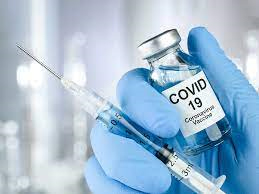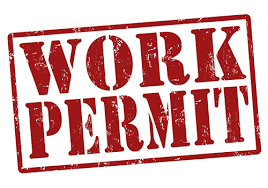Learn More About:
Immigration News & Updates eNewsletter ©  2011  - 2021Â
For questions about U.S. Residency, Green Cards and Immigration Visas, Visit our Website at: www.ImmigrateToday.com or  call our office at: (954) 382-5378
Check Out This Cool Stuff For Immigrants....
Immigration
Questions & Answers
This Week's Immigration NewsÂ
  Immigration News & Updates        Â
       Â
Immigration How To:
How Do I Find Out What The Status Of My Case Is?
Questions About Immigration? We have the answers!
We Are Here To Help, Call us now for a FREE consultation (954) 382-5378
COVID-19 Vaccine Now Required For all Green Card Applicants
    AMERICAN IMMIGRATION
         LAW CENTERS
Immigration Questions: (954) 382-5378
 POSTING DATE: September 6, 2021
Question: I got my citizenship this year and for the past few years my fiancée and I were going back and forth to visit each other because she was still in nursing school. But because of the pandemic itâs been really hard and with new testing and even covid shot requirements we donât know what to expect in the future. Thankfully she made it here a few weeks ago to visit me in Fla and we are talking seriously about getting married and having her stay here with me. Our families had been planning on us having a big wedding in Bahamas but the pandemic put that on hold and we decided we donât want to put our lives together on hold any more. Our question is after we get married, can she stay here with me and not have to return home or is there some requirement that she has to go back? If she is allowed to stay, would she be able to start back in college here so she can finish her nursing degree?
American ImmigrationÂ
Law Center
2645 Executive Park DriveÂ
Suite 137
Weston, Florida 33331
On August 24, 2021, the Centers for Disease Control and Prevention (CDC) added the COVID-19 Vaccine to the list of required immunizations for U.S. residency and Immigrant Visa applicants. As a result, beginning October 1, 2021, green card applicants (applying for residency, form I-485) and Immigrant Visa applicants processing through U.S. Consulates abroad, will be required to be fully vaccinated against COVID-19.Â
For background, as part of the immigration residency process, applicants are required to undergo a medical examination, testing and to receive age-appropriate vaccinations for a variety of preventable diseases, before obtaining U.S. residency.Â
Helpful Immigration Tips You Can Use...
Tips On Filing Your Immigration Application Properly The First Time!
With so many new immigration changes being implemented as a result of the pandemic, itâs more important than ever for you to take extra care when filing any new immigration application.Â
Once you are certain that you are eligible for the immigration benefit you are applying for, here are a few tips to make sure that your case is filed properly and you have retained the information that you will need during case processing:
How To Make An E-Request On Your Pending Immigration Case
When making an immigration application, it is very important it is to be informed about your case, including qualifying, understanding the typical process, timing and staying updated on your case status. So assuming you have done all that, what happens when your case remains pending past the posted processing times? Or, the online status says the USCIS sent you a notice, but you never received it after 30 days?Â
Answer: Since your fiancée entered the U.S. legally, once you get married, we can file her adjustment of status case and she can stay in the U.S. and live and work here while waiting for your residency interview, then her green card issuance. Due to covid-19 processing delays, it will likely take about 6-8 months for her work and travel permit to be issued and perhaps another several months for your marriage interview to be scheduled. Under strict immigration regulations, foreign nationals are not permitted to attend college here without the issuance of a student visa, however, once she obtains her green card she can finish up her nursing program here. Let me know when you plan to get married and we can get started.Â
New Policy Eliminates The Requirement For F-1 StudentÂ
Visa Applicants to File âBridgeâ Applications
New USCIS Notice For Removal of ConditionsÂ
Automatically Extends Residency For Two Years!Â
The USCIS has announced that beginning September 4, 2021, immigrants who filed extensions to remove conditions on residency (forms I-751 or I-829) will now have their residency automatically extended for 24 months. Until this change, immigrants who filed such requests received a USCIS I-797 Notice of Action receipt which only extended residency status for 18 months. This change is due to the reality of long backlogs in processing I-751 cases for spouses of U.S. Citizens to remove conditions on their residency to obtain permanent green cards, as well as for EB-5 investors who file for permanent residency.Â
Premium Processing (Expedited Service) May Soon Be Available For Work Authorization And Other Immigration Applications
Last year, the U.S. Department of Homeland Security (DHS) began consideration of expanding expedited immigration processing services, called âpremium processingâ to a wide variety of immigration applications. Current, only employment-based applications such as the I-129 and I-140 qualify.Â
However, under a policy which may be announced in the next few months, the USCIS may expand premium processing services to include forms I-765 request for work authorization (work permit) and form I-539 requests to change or extend status in the U.S. (for instance to change status to an F-1 student visa or extend the time a foreign tourist can stay inside the U.S.).Â
Who is required to have the COVID-19 vaccine under the new policy ?
All immigrants applying for adjustment of status inside the U.S. (a green card) AND all immigrants abroad applying for an immigrant visa through the U.S. Consulate.
What is the procedure to have the COVID-19 vaccine administered?
Unlike current vaccines which are administered during the required immigration medical exam, under the new COVID-19 requirement, immigrants age 12 yrs or older must complete the COVID-19 vaccine series (1 or 2 doses depending on formulation) and provide documentary proof to the USCIS/State Department authorized doctor before completion of the medical examination. To qualify, COVID-19 vaccines must be recognized for use by either the U.S. Food and Drug administration (FDA), which are currently: Pfizer, Moderna and Janssen, or the World Health Organization (WHO) in the country where the medical examination is conducted. COVID-19 vaccines administered overseas must be documented on the DS-3025 and for countries with the eMedical system, on form 951.
What about immigrants who do not want to take the COVID-19 vaccine?
Immigrants who do not want to take the COVID-19 based upon religious or moral convictions may apply for a waiver from the vaccine requirement with U.S. Citizenship and Immigration Services (USCIS). Waiver requests must include documentation that the applicant is requesting an individual waiver based on religious or moral convictions and are not guaranteed to be approved. If a waiver is denied, and the immigrant refuses to complete the COVID-19 vaccine series, his or her case will be denied and he or she will no longer be eligible to obtain a green card or immigrant visa to the U.S..
Are other waivers available?
Blanket Waivers are available for COVID-19 vaccinations in cases where:
-the vaccine is no not age-appropriate
-the immigrant has a preexisting medical condition that serves as a reason not to take a certain medical treatment due to the harm that it would cause the patient, as documented by a physician.
-the immigrant had a severe reaction to the first dose that is considered a contraindication, as documented by a physician.Â
-the immigrant is in a country where the vaccine is not routinely available
Required Residency Vaccinations:
The new USCIS receipt is evidence of residency and can be used along with the expired green card to extend Driverâs Licenses, to work and travel.Â
If the new policy does go into effect, individuals will be able to request expedited USCIS processing for I-765 & I-539 applications for an additional fee of $1,750, in order to obtain a decision on the application in 30 days, rather than the current processing time of 8 to 12 months or more.Â
The USCIS recently changed its policy on the need for F-1 Student Visa applicants to file B-2 extension applications while waiting for a decision from the USCIS on a pending F-1 application in order to remain in legal status.
Under the new policy, F-1 applicants need only file form I-539 to change status to an F-1 visa and may remain in the U.S. legally while awaiting a decision on the case.
Previously, under Trump administration policies, F-1 applicants were forced to file one or more I-539 B-2 extension requests, called âBridgeâ applications, in order to maintain legal immigration status through the process that can take a year or more
You can read the new USCIS policy Â
Work Permits For F-1 Students Eligible For OPTÂ
Will Now Be Processed In 120 Days Or Less
Under a new policy recently implemented by the USCIS (pursuant to a court order) , F-1 Students filing form I-765 (request for work authorization)Â for OPT and STEM OPT are guaranteed to receive a decision on their application within 120 days of receipt.Â
This policy will continue until at least October 31, 2021. The policy change is due to significant USCIS delays in processing such applications, which prompted a lawsuit against the agency.Â
During this period, the USCIS will also retroactively correct work permits which were issued between Oct 1, 2020 and up to October 31, 2021Â for less time than was recommended on form I-20, as well as accept previously rejected OPT/STEMÂ applications (up until November 30, 2021) which were originally filed on time between October 1, 2020 and October 31, 2021 and later rejected. The USCIS will also accept of Form I-765 post-completion OPT applications 120 days before completion of program, instead of the regular 90 days, from July 23, 2021 through October 31, 2021.
Read the court order and the new USCIS policyÂ
Question: I am a naturalized U.S. citizen and filed to sponsor my mom for her green card a few years ago. Her case was approved last year and her embassy interview was scheduled, then it got cancelled, so now we are just waiting for it to be rescheduled again which looks like it may not happen this year or even next! She doesnât have any relatives there except her sister because all her kids live in the U.S.. She has come up a few times to visit and is staying with my sister in Orlando now. We are wondering if it is possible that we can convert her case from the embassy to the U.S. and do her case here. Can she stay here legally? Is that something that you can help us with or do we need to contact the embassy where her case is? Thank you.
Answer:Â The great news is that we can file your motherâs residency case here in the U.S. now and she can process for her green card here, rather than through the U.S. Consulate abroad. No need to wait for the consular interview to be rescheduled. The adjustment of status process for parents in the U.S. takes about eight months or so and often does not even require an interview at the USCIS office. Your mother will be in legal status throughout the entire residency process and will receive her residency here in the U.S.. I hope this is helpful to you.
Question: I filed for my citizenship too early and my case got denied last week. I thought I could file for citizenship after me and my wife were married for 3 years. The officer said sorry no, I had to be a resident for 3 years, which I was by the interview date, but he said it had to be by the date I filed the citizenship papers. Now I lost the $725 filing fee. Well, now I want to file again, my question is if there is a waiting period after the case got denied or can I file the case again right away. I appreciate your email newsletters, thanks.Â
Answer:Â Most U.S. Residents must wait for 4 years and 9 months from the date of first obtaining their Green Cards before being eligible to apply for U.S. citizen through Naturalization. However, the law allows U.S. Residents who are married to and living with their U.S. citizen spouse in a bona-fide (real) marriage to apply for Early Naturalization in 2 years and 9 months after obtaining their Green Card. The law is generally known as the 3/3/3 rule: 1) The U.S. citizen Spouse must have been a U.S. citizen for at least 3 yrs; 2) The couple must have been married for at least 3 yrs and finally 3) The U.S. Resident must have held status as a Green Card holder for at least 3 yrs (really only 2 yrs & 9 mos). As long as you and your U.S. citizen wife remain living together in a real marriage you can refile your case immediately, there is no waiting period. Just make sure that you provide evidence that you are married to a U.S. citizen (marriage certificate) and that your wife has been a U.S. citizen for at least 3 years (U.S. birth certificate, U.S. passport bio page or Naturalization certificate) and finally that you have held residency for at least 2 years and nine months (copy of your green card). Good luck!Â
1) Make Sure You Have The Correct Filing Fees: Make sure the USCIS filing fee is correct. Go online to the USCIS website and use the Fees Calculator. If you are not using the online calculator and just looking at a fees list, note that some applications require an additional $85 biometrics fees in addition to the regular filing fees and you can include that fee on the same check as the regular filing fee. For instance, a residency case includes form I-130 ($535), form I-485 ($1,140) plus the $85 Biometrics fee, for a total of $1,760. The work permit and travel permit requests forms I-765 and I-131 are currently included in the I-485 fee.
2) Pay your USCIS Fees correctly:Â Make sure you pay the fees using the correct payment method. Fees can be paid by a personal check, Cashierâs Check, Money Order, Credit Card, Debit Card or even Gift Card. When paying by card, make sure and complete a separate form G-1450 for each immigration form payment. For instance, if your residency application is based upon marriage, youâll need to fill out a form G-1450 for the form I-485 for $1,225 (which includes the $85 Biometrics fee) and a separate one for form I-130 $535.Â
3) Double Check Form Edition Date: Before filing your Immigration application, makes sure and check the USCIS forms website to ensure that you are using the most updated form, since filing an outdated form will result in case rejection. To download the current edition of each form, go to www.USCIS.gov and click on the Forms link, then choose your form
4) Foreign Language Documents:Â All documents in a foreign language must be accompanied by an English translation and âCertificate of Translationâ signed by the translator, attesting to the fact that they are fluent in the foreign language and English. Example: I [name of translator], certify that I am fluent in the English and [type in name of foreign language, for instance, Spanish] languages, and that the above is an accurate translation of the attached document. Have the translator sign, date and type in his or her address. If itâs not possible to get foreign language documents translated in time, wait for the USCIS officer to send a request for it and send it in at that time
5) Make a copy of your entire application before filing: Itâs vital that you make and keep copies of every page of your signed application, all supporting documents and check/money order for your records. You will need this in case you receive a Request For Evidence from the USCIS once your case is filed, so that you can review the documents which were submitted, and may also need them for reference in any future immigration case.
6) Send your application to the correct address:Â Make sure and check the USCIS website just before sending your application to see the most current filing address for your forms. Go to www.USCIS.gov and click on the Forms link, then choose your form and scroll down to âwhere to fileâ.
7) Use the correct mail service. Never, ever, ever send an application using Certified Mail, always send Fed-ex or USPS Priority Mail or Express Mail with tracking. Be sure to check on line and printout delivery confirmation a few days after you send your application, to confirm it was received and save the confirmation for your records.Â
8) Sign-up for E-Notification:Â Get a text message or email e-notification from the USCIS confirming that the application was received and accepted for processing by the USCIS along with the case receipt number(s), by signing up for E-Notification. Its easy to do, just include form G-1145 with each of your applications (put it on top of your forms).
9) Sign-up for E-Mail Case Updates:Â Once you receive your USCIS Receipt (called I-797 Notice of Action) â usually in about 10 days, go online to www.USCIS.gov and click on âCheck your case statusâ then sign-up for email updates on your case using your case number.
10) Check USCIS Processing Times:Â Go to www.USCIS.gov and click on âCheck your case statusâ then scroll down and click on âUSCIS Processing Times Informationâ and click on the Service Center or office where your case is processing to see the current processing times for your application type. Â
Well, a helpful tool which can sometimes provide you with updated information or a duplicate notice is to file an USCIS E-Request. USCIS allows the E-Request to be filed for the following reasons:
⢠Your case over the normal processing times posted on the USCIS website
⢠You did not receive a notice, card or document by mail
⢠You changed your address online as required, but the USCIS is still using your old addressÂ
⢠A notice or card you received has a typographical error
If your issue falls within one of these categories, you can go online to the USCIS E-Request webpage and place what is referred to as a âService Requestâ, by fully completing the online form. Have your receipt handy so you can input the correct information. Once the request is submitted, you will receive a number and estimated completion date to hear from the USCIS regarding your request. This is usually within 15-30 days. Note that E-Requests complete online will not be allowed to be submitted for a case which you believe it pending too long if your case is not over the normal processing times posted on the USCIS website.
After your Service Request has been submitted, you can expect one of the following responses:
1. You will receive the pending notice, approval, document or notice of correction prior to the USCIS estimated completion date;
2. You will receive a response from USCIS stating the case is within normal processing times and they will process the case as their resources allow; or,
3. You will not receive a response at all. In these cases, wait at least 30 calendar days from the date you filed the previous Service Request, then either place an new one, explaining that the previous one has not been answered, or call the USCIS 800#.
If all else fails and you have filed the E-Request, gotten no response after 30 days, called the 800# and still gotten no response within another 30 days, you should probably go the next step and contact a qualified immigration attorney to sort out your immigration issue and get your case moving again.Â















